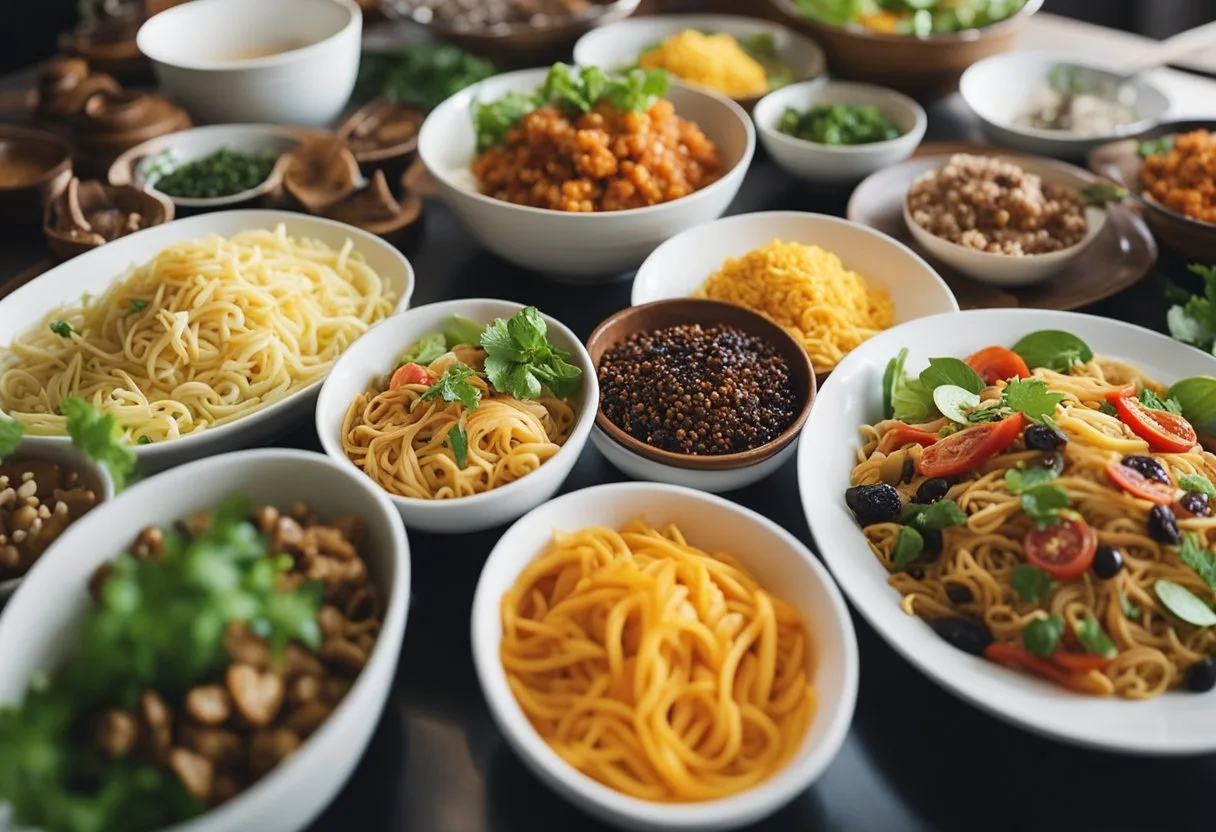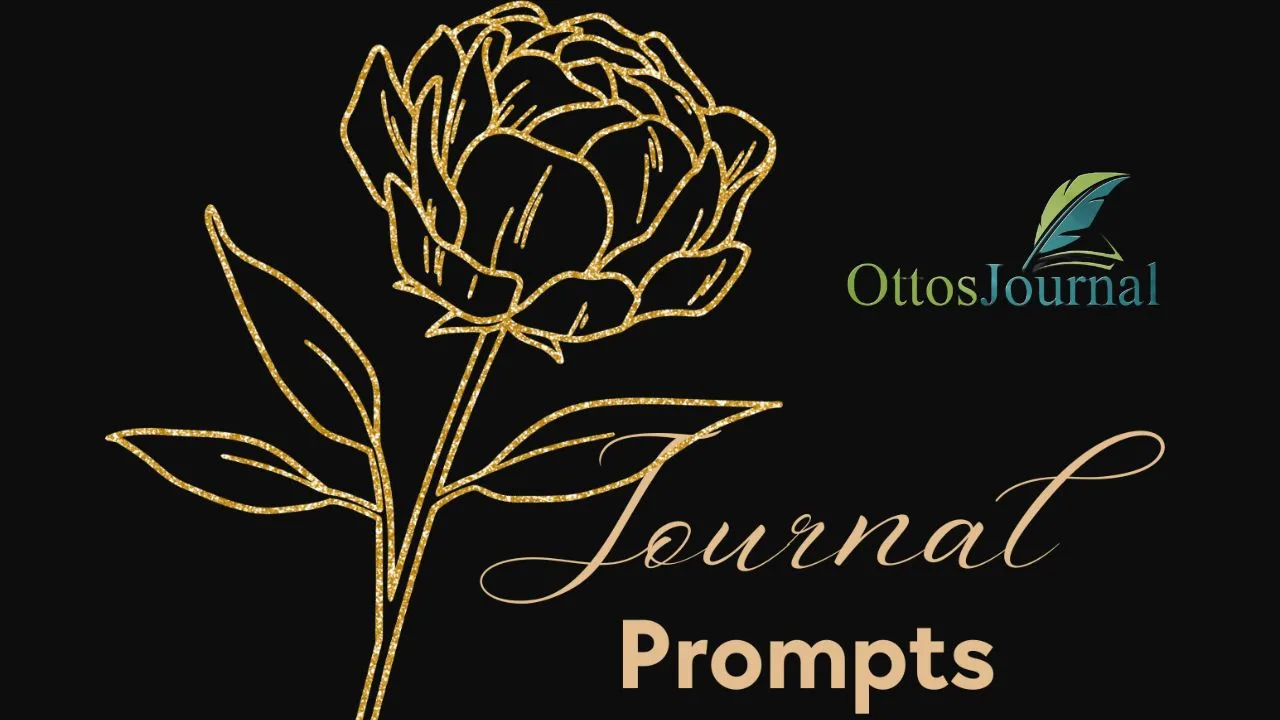Writing about food can be a fun and creative way to explore the world of writing prompts. Whether you’re a seasoned writer or just starting out, there are plenty of ways to use food as inspiration for your writing. From describing your favorite meal to imagining a world where food is scarce, the possibilities are endless. In this article, I will share with you 55 writing prompts about food to encourage exploration of the diverse aspects of food, including cultural significance, personal memories, and imaginative scenarios related to culinary experiences.
One way to get started with writing prompts about food is to think about your own experiences with food. What are some of your favorite foods, and why? Have you ever had a particularly memorable meal, either for good or bad reasons? What are some of the cultural or family traditions that revolve around food for you?
Exploring the Senses in Food Writing
Food writing can be a sensory experience that engages all five senses. By exploring the sensory aspects of food, writers can create vivid descriptions that transport readers to the world of the dish.
Taste and Smell: The Flavorful Duo
Taste and smell are the two senses most closely linked to food. A dish’s flavor is a combination of its taste and aroma, and both can be described in detail to bring a dish to life. In food writing, it is important to use descriptive language to convey the flavors of a dish. Words like “sweet,” “salty,” “savory,” and “spicy” can help readers imagine the taste of the dish, while words like “earthy,” “floral,” and “citrusy” can describe its aroma.
Visual Feasts: The Role of Sight
The appearance of a dish can also be an important aspect of food writing. Food presentation can be described in detail, including the colors, shapes, and textures of the ingredients. In food writing, it is important to use vivid language to describe the visual aspects of a dish. Words like “crispy,” “juicy,” “golden-brown,” and “fluffy” can help readers imagine the texture of the dish, while words like “vibrant,” “rich,” and “colorful” can describe its appearance.
Textures and Touch: The Feel of Food
Texture and touch are also important sensory aspects of food. The texture of a dish can be described in detail, including its crunchiness, creaminess, or chewiness. In food writing, it is important to use descriptive language to convey the texture of a dish. Words like “smooth,” “crunchy,” “silky,” and “velvety” can help readers imagine the feel of the dish in their mouths.
Hearing the Kitchen: Sounds of Cooking
The sounds of cooking can also be an important aspect of food writing. The sizzling of a pan, the bubbling of a pot, and the clanging of utensils can all be described in detail to create a sensory experience for readers. In food writing, it is important to use descriptive language to convey the sounds of cooking. Words like “sizzle,” “bubble,” “crackle,” and “whisk” can help readers imagine the sounds of the kitchen.
Journaling and Food
Journaling can be a useful tool for exploring the sensory aspects of food. By keeping a food journal, writers can record their experiences with different dishes and ingredients, including their taste, aroma, appearance, and texture. This can help writers develop their descriptive skills and create more vivid food writing.
Exploring the sensory aspects of food can be a powerful tool for food writers. By using descriptive language to convey the taste, aroma, appearance, texture, and sounds of a dish, writers can create a sensory experience for readers that transports them to the world of the dish.
55 Writing prompts about food
Here are 55 writing prompts about food:
- Describe your most memorable meal and why it stands out.
- Write about the role of food in your family’s traditions.
- Imagine a world where one food is currency. What food is it and why?
- Describe the process of learning to cook your favorite dish.
- Write about a time you tried a new cuisine and your reaction to it.
- Create a story where food has magical properties.
- Describe your ultimate comfort food and what makes it comforting.
- Write a poem about the sensory experience of eating your favorite fruit.
- Imagine you’re opening a restaurant. What’s on the menu?
- Write about a food that reminds you of home.
- Describe a cooking disaster and what you learned from it.
- Write about the first time you cooked for someone else.
- Create a fictional culture based on their unique cuisine.
- Describe a food that you dislike and why.
- Write about the experience of dining in complete darkness.
- Imagine a day where you can only eat sweet foods. What would it be like?
- Describe a memorable experience you had at a food market.
- Write about the connection between food and community in your area.
- Create a story about a chef with a secret ingredient.
- Describe the perfect picnic and what foods you’d bring.
- Write about a time when food brought people together.
- Imagine a future where food is synthesized. What is lost or gained?
- Describe an heirloom recipe and its history in your family.
- Write about the experience of cooking over an open fire.
- Create a character whose mood is influenced by what they eat.
- Describe the most unusual food you’ve ever eaten.
- Write about the role of food in a holiday celebration.
- Imagine a society where certain foods are banned. What are the consequences?
- Describe the experience of baking with someone you love.
- Write about a food that evokes a strong memory.
- Create a story where a meal has life-changing effects.
- Describe a time when you had to eat something out of politeness.
- Write about the challenge of cooking a meal for a large group.
- Imagine discovering a new fruit. What does it taste like?
- Describe the experience of eating a dish from your heritage for the first time.
- Write about a food that represents your personality.
- Create a story about a food critic with a big secret.
- Describe the experience of growing your own food.
- Write about the complexities of being a vegetarian or vegan in a meat-eating society.
- Imagine a potion made from various foods. What does it do?
- Describe a time when you indulged in a guilty pleasure food.
- Write about the cultural significance of a particular dish in your community.
- Create a story about a lost recipe that is found.
- Describe the experience of eating at a Michelin-starred restaurant.
- Write about the role of food in a work of fiction you enjoyed.
- Imagine a cooking competition with a high-stakes prize.
- Describe the art of plating and presentation in fine dining.
- Write about the experience of eating something for the last time.
- Create a story about a family-owned restaurant’s legacy.
- Describe the perfect food to eat on a rainy day.
- Write about the connection between food and health.
- Imagine a character who can taste emotions in food.
- Describe the experience of teaching someone to cook.
- Write about the tradition of a potluck dinner and what it signifies.
- Create a story about a secret supper club with an exclusive menu.
These prompts encourage exploration of the diverse aspects of food, including cultural significance, personal memories, and imaginative scenarios related to culinary experiences.
Cultural and Personal Connections to Food
Food is a powerful medium that can evoke strong emotions and memories. People often associate food with cultural and personal experiences, which can inspire creativity and connection. In this section, we will explore how food can be used as a writing prompt to explore one’s cultural and personal connections to food.
Memory Lane: Food and Recollection
Food memories are often some of the most vivid and nostalgic memories that people have. Whether it’s the aroma of a favorite dish or the taste of a childhood treat, food can transport people back in time. Writing prompts that focus on food memories can be a great way to explore one’s personal history and reflect on the role that food has played in their life.
Global Cuisine: Exploring Cultures Through Dishes
Food is an essential part of cultural identity, and exploring different cuisines can be a great way to learn about different cultures and traditions. Writing prompts that focus on global cuisine can encourage people to step outside of their comfort zone and try new dishes. Whether it’s a favorite restaurant or a street food vendor, there are endless possibilities for exploring different cuisines.
Community and Sharing: Food as Connection
Food has the power to bring people together and create a sense of community. Writing prompts that focus on food as a means of connection can encourage people to explore the social and cultural aspects of food. Whether it’s a potluck dinner or a family gathering, food can be a way to share stories, traditions, and experiences with others.
Writing prompts about food can be a powerful way to explore one’s cultural and personal connections to food. By focusing on food memories, global cuisine, and food as a means of connection, people can use food as a medium to reflect on their personal history, learn about different cultures, and connect with others.
Creative Writing Prompts for Food Lovers
Food lovers who also enjoy creative writing can combine their passions with these writing prompts. These prompts can help writers explore their imagination and create vivid descriptions of their favorite dishes or dream up new flavors. Here are three prompts to get started:
Describing Your Favorite Dish
One way to get started with food writing is to describe a favorite dish. Writers can use sensory language to describe the taste, texture, and aroma of the dish. They can also write about the memories or emotions associated with the dish. For example, a writer might describe the warmth and comfort of a bowl of chicken noodle soup on a cold winter day or the excitement of biting into a juicy cheeseburger at a summer barbecue.
Imagining New Flavors: A Creative Exercise
Another way to explore food writing is to imagine new flavors and dishes. Writers can brainstorm ingredients and combinations to create unique flavors. They can also write about the cultural or historical significance of certain ingredients or dishes. For example, a writer might imagine a fusion dish that combines the flavors of Mexican and Korean cuisine or write about the history of chocolate and its use in traditional Mexican cuisine.
The Restaurant Review Scenario
A popular scenario for food writing is the restaurant review. Writers can visit a restaurant and write a review of the menu and dishes. They can use descriptive language to convey the taste and presentation of the dishes. They can also write about the atmosphere and service of the restaurant. Alternatively, writers can imagine a restaurant and create a menu and dishes for it. They can also write a review of their own imaginary restaurant.
These creative writing prompts can help food lovers explore their passion for food and writing. By using sensory language and imagination, writers can create vivid descriptions of dishes and explore new flavors and scenarios.
From Ingredients to Meals: A Writer’s Journey
Writing about food can be one of the most enjoyable and rewarding experiences for writers. It allows them to explore the different dimensions of food, from the ingredients to the meals, and everything in between. In this section, we will take a closer look at some of the aspects of food writing that can help writers create compelling and engaging content.
The Story of an Ingredient
Every dish has a story, and every ingredient has a history. Writing about the story of an ingredient can be a great way to engage readers and provide context for the dish. For example, a writer might explore the history of sourdough bread, tracing its origins back to ancient Egypt and following its journey through Europe and the United States. By exploring the history of an ingredient, writers can provide readers with a deeper understanding of the dish and its cultural significance.
Crafting a Menu: A Writing Challenge
Crafting a menu can be a challenging task for any chef, but it can also be a great writing challenge for food writers. A writer might create a menu for a fictional restaurant, exploring different themes and flavor profiles. By crafting a menu, writers can also explore different food choices and showcase their creativity and culinary knowledge.
Food Security and Hunger: Opinion Pieces
Food security and hunger are important issues that affect millions of people around the world. Writing opinion pieces about these issues can help raise awareness and inspire action. A writer might explore the impact of food insecurity on different communities or examine the role of supermarkets in addressing hunger. By writing about these issues, writers can help create a more just and equitable food system.
Food writing can be a fascinating and rewarding experience for writers. By exploring the different dimensions of food, from the ingredients to the meals, writers can create compelling and engaging content that informs and inspires readers.
Frequently Asked Questions
How can you describe a memorable meal you’ve had in a way that transports the reader to the table with you?
To describe a memorable meal in a way that transports the reader to the table with you, it is important to use sensory details that appeal to all the senses. Describe the aroma of the food, the texture, the colors, and the flavors. Use descriptive adjectives, metaphors, and similes to paint a vivid picture of the meal. The goal is to make the reader feel like they are sitting at the table with you, experiencing the meal firsthand.
What are some engaging prompts to inspire students to write about their cultural food traditions?
To inspire students to write about their cultural food traditions, you can ask them to describe a traditional dish from their culture, how it is prepared, and what it means to them. You can also ask them to write about a family recipe that has been passed down through generations and how it has evolved over time. Another prompt could be to write about a special occasion or celebration that involves food in their culture.
What narrative can you create about a character’s relationship with food during a significant life event?
A narrative about a character’s relationship with food during a significant life event could be about how food plays a role in their emotional state. For example, a character going through a breakup might find solace in comfort foods, or a character celebrating a milestone might splurge on a fancy meal. The food choices can reveal a lot about the character’s personality, values, and emotions.
How would you compare and contrast two favorite dishes to highlight their unique flavors and textures?
To compare and contrast two favorite dishes, it is important to focus on the unique flavors and textures of each dish. Describe the ingredients, the cooking methods, and the presentation. Compare and contrast the flavors and textures of each dish, highlighting what makes them unique. Use sensory details to make the reader understand the differences between the two dishes.
What are effective ways to incorporate sensory details into a food-related story?
Effective ways to incorporate sensory details into a food-related story include describing the aroma, texture, colors, and flavors of the food. Use descriptive adjectives, metaphors, and similes to paint a vivid picture of the food. You can also describe the sounds of the kitchen, the heat of the stove, and the hustle and bustle of the restaurant. The goal is to make the reader feel like they are part of the story.
Can you devise a scenario where food plays a pivotal role in advancing the plot of a short story?
Yes, a scenario where food plays a pivotal role in advancing the plot of a short story could be about a chef who is competing in a cooking competition. The chef’s signature dish is stolen by a rival competitor, and the chef must come up with a new dish on the spot to win the competition. The dish that the chef creates could reveal something about their personality or values, and it could also lead to a surprising plot twist.




